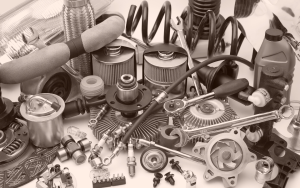Is It Bad for the Environment to Let Your Car Idle?
Emissions do more harm to the environment than we realize, but science is slowly revealing the full story. Thankfully, there are ways we can help Mother Nature begin to recover, and many require only a few simple habit changes. Cutting our cars‘ engines off rather than letting them idle is one of them. Here’s why.
Is letting your car idle really that bad?
Yes, idling your car is bad. The U.S. Department of Energy reports that tailpipe emissions contribute to poorer air quality. Many of us suffer from that right now, and our children and grandchildren will most likely suffer even worse.
The major problem with letting your vehicle idle is climate change. Science has shown that emissions are affecting the temperature of the Earth and can even change the weather. You might not notice the changes from day to day or even year to year, but look at the changes through the years, and the difference becomes more obvious.
If you’re not sure if pollution is a real thing, try cruising through a major city with your car windows down. Then try the same experience in a rural area with little traffic. The difference in air quality is shocking. One makes you wish you were in a convertible with your hair blowing in the wind, while the other leaves you coughing and sputtering.
Emissions effects are accumulative and aren’t something we can change quickly. It will take a lot of work from everybody, but it’s worth it. Plus, there are other reasons to cut your engine off that should give you some incentive.
This isn’t the only reason not to let your car idle
Another reason not to let your car idle is that it costs you more at the pumps. With gas prices rising, it’s a good idea to save every penny you can. Cutting your vehicle’s engine off is a simple yet effective way to do this.
“Researchers estimate that idling from heavy-duty and light-duty vehicles combined wastes about 6 billion gallons of fuel annually,” the Department of Energy reports. “About half of that is attributable to personal vehicles, which generate around 30 million tons of CO2 every year just by idling. While the impact of idling may be small on a per-car basis, the impact of the 250 million personal vehicles in the U.S. adds up.”
How can you avoid excess tailpipe emissions?
A few years ago, some engines needed to idle to reach an optimal temperature. This was true for the engine and the vehicle’s occupants during wintry months.
That’s no longer true for modern cars. Driving the car will better warm up the engine than letting it idle. This doesn’t mean you should jump in and gun the engine, of course. It’s recommended that you start slowly to give the car time to do its thing without overloading it. A quick look at the owner’s manual will tell you if idling is good for your vehicle.
Another way to save money on gas and save the world at the same time is to cut your engine off in drive-through lines. It’s annoying enough to have to sit there while you wait to order and receive your food. Why waste money on gas by letting your car idle?
The same goes for picking up your kids at school. Many schools do an excellent job of keeping the line moving, but some like to show up early and wait. If that sounds like you, cut the engine while you wait.
RELATED: What Do They Test for in an Emissions Inspection?
The post Is It Bad for the Environment to Let Your Car Idle? appeared first on MotorBiscuit.




